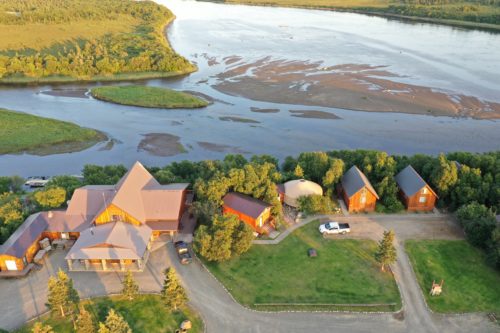
Bristol Bay’s Massive Sockeye Projections Prompt Calls To Protect Region Further

As another record-setting sockeye salmon season is expected in Bristol Bay this year, the region’s tribal and fishing leaders are calling for permanent protections. First, here’s the official Alaska Department of Fish and Game’s projections:
SALMON OUTLOOK
BAYWIDE
The 2022 Bristol Bay inshore sockeye salmon run is forecasted to be approximately 73.4 million fish (https://www.adfg.alaska.gov/static/applications/dcfnewsrelease/1346495668.pdf). Based on the forecast and using the midpoints of either the lower or upper portion of escapement goal ranges, depending on forecasted run size, there is a potential surplus of 59.9 million sockeye salmon (Table 1). The department manages fisheries based on inseason information regarding abundance. The inseason management approach uses a suite of assessment tools to provide information on abundance and run timing in each district, and that information will be used by the department to determine fishing opportunity.
The commercial salmon season in Bristol Bay opens June 1 by regulation. Fishing in eastside districts and the Togiak District will be allowed using a weekly schedule that varies by section. The schedules are in place to balance fishing opportunity with escapement in the early part of the season, particularly for king salmon. As each run develops and sockeye salmon run characteristics become defined within individual districts, fishing time will be adjusted accordingly. In the Nushagak District, management will focus on king salmon in the early part of the season, and switch to sockeye salmon management as abundance dictates.
The average size of Bristol Bay sockeye salmon is expected to continue to be small in 2022 based on recent trends and forecast return of smaller 1.2 and 2.2 age classes.
United Tribes of Bristol Bay executive director Allannah Hurley and SalmonState executive director were among those who made statements about the need for more strict protections for Bristol Bay:
(Dillingham, Alaska) – Last week, the Alaska Department of Fish and Game released its 2022 Bristol Bay Commercial Salmon Fishing Outlook. The report projects that more than 73.4 million sockeye will return to Bristol Bay.
The record projections for this fishing season are due to Bristol Bay’s unpolluted and pristine watershed thanks to thousands of years of Indigenous stewardship. For decades, Bristol Bay has been threatened by Pebble Mine – a proposed massive open pit mine at the headwaters of the Bay that would produce up to 10.2 billion tons of waste. Currently, the Environmental Protection Agency (EPA) has the ability to veto Pebble Mine and protect the region by this summer’s fishing season.
Bristol Bay provides nearly 60 percent of the world’s wild sockeye salmon. The lands and waters of the region sustain the cultural and spiritual identity of tribes in the area and employ tens of thousands of people in commercial fishing, hunting and sportfishing, outdoor recreation, and tourism.
In response, Tribes, fishing and conservation groups issued the following statements:
“The record-breaking salmon projections for the 2022 fishing season are yet another reason why EPA must act swiftly to protect Bristol Bay from Pebble Mine for good. If protected, Bristol Bay’s irreplaceable watershed will continue to sustain our Tribes and feed communities across the world. This is the last great wild salmon fishery left on the planet, after almost twenty years the science and record are crystal clear, EPA must end the threat of Pebble once and for all,” said Alannah Hurley, Executive Director of the United Tribes of Bristol Bay.
“The recent report projecting another record-breaking fishing season in Bristol Bay from the Alaska Department of Fish and Game is great news for the Tribes, fishermen, and communities who rely on Bristol Bay salmon to support their way of life. But this incredible fishery remains at risk until the EPA vetoes Pebble Mine. This needs to be the final season that the specter of Pebble looms of Bristol Bay. EPA has the opportunity and the responsibility to ensure that this special place, which feeds communities from coast to coast, sustains thousands of jobs, and supports the economy, is never threatened by mining again,” said Tim Bristol, Executive Director of SalmonState.
“The Alaska Department of Fish and Game’s recent report projecting another record-breaking fishing season in Bristol Bay must prompt EPA to veto Pebble Mine and finally finish the job of protecting this special place. With more than 73 million sockeye salmon expected to return this summer, Bristol Bay will sustain thousands of jobs, generate billions of dollars in economic activity, and continue to support a thriving commercial fishery that supplies over half of the world’s wild sockeye salmon. Commercial fishermen, Tribes, and communities who rely on Bristol Bay salmon should not have to live in limbo, facing a reckless mining project which could destroy our way of life, any longer. The EPA must use its authority to end the threat of Pebble Mine and protect Bristol Bay now,” said Katherine Carscallen, Director of Commercial Fishermen for Bristol Bay.



